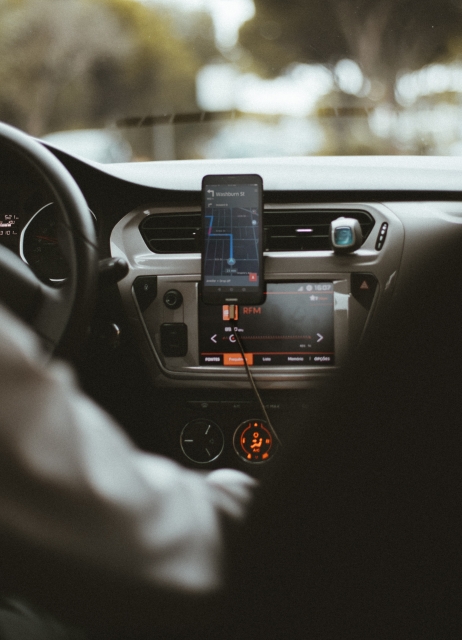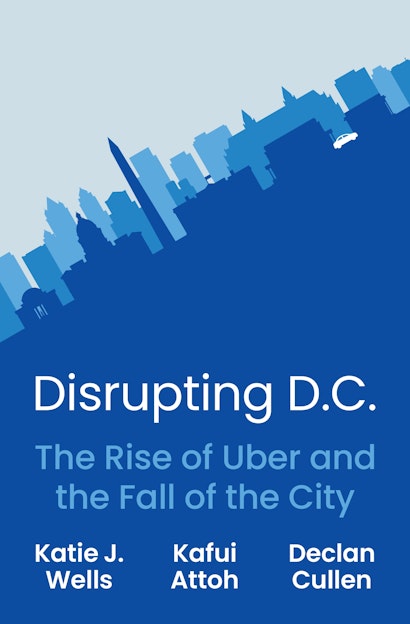For years, Diana, who has lived her whole life in the D.C. area, took jobs at fast-food restaurants even though she hated the work. The managers at McDonald’s and similar businesses were willing to accommodate her schedule as a part-time student at the University of the District of Columbia. When she started to drive for Uber in 2016, she told us she was enthusiastic about its potential to free her from a reliance on fast-food jobs: “I love driving Uber … I set my own hours. It’s stress-free … I have no boss.”
Diana was conflicted about Uber, however. She wondered whether the rise of Uber would endanger investments in the public-transit system, which she had used since she was eight years old. She also wondered whether Uber’s presence in the city could mean fewer unionized jobs in the transit system, where she could imagine working one day. As an Uber driver, she found herself rooting against Metro and cheering on what local radio stations called the “Metropocalypse,” a proliferation of closures, delays, and track fires that had beset the ailing system. “It’s great. It’s bad … because you’re taking Metro people out of work. But at the same time… . It’s going to be a lot of rides out there, a lot of customers. I like it when Metro doesn’t work. That’s how I make my money.”
Two years later, Diana stopped working as an Uber driver. She had graduated from college and, for the first time, was employed full-time. She was a police officer for the D.C. Housing Authority—a job with a salary and some benefits. Diana told us she loved the work:
I get to interact with people from different parts of the city … I work in a lot of the [public] housing projects. And I get to see the struggle, and I get to make a difference. And I have a lot of communication with the younger kids… . It’s an amazing feeling to do something that makes you feel like you’re helping.
Still, Diana didn’t write off the gig economy. In fact, she was effusive in her defense of it. Uber, she said, “helps people at their time of need.” She felt this way despite running into occasional problems with the platform. These included problems where she did not get paid for completed rides, she incurred $1,200 worth of damage to her steering wheel, and she was sexually assaulted by a passenger. Diana was clear with us: If she lost her job as a police officer or needed extra income, she would sooner go back to working for Uber than return to the fast-food industry.
And go back she did. Three years later, she was still employed as a police officer for the housing agency, but her $53,000 salary no longer went far enough. Her rent had gone up, and so had her bills. And now, at age twenty-nine, she had a newborn baby. She took maternity leave, as mostly unpaid time off. To get by, she applied for food stamps and signed up to deliver for Uber Eats.
When we last spoke, Diana was averaging forty-one hours a week on the delivery platform, in addition to the forty hours she spends as a police officer. She does the Uber Eats delivery work on the weekends or after she finishes her job at the housing agency, where her shifts run from either 11:00 p.m. to 7:00 a.m. or 6:00 a.m. to 2:00 p.m. Her godmother or a friend watches her son while she works. She says that meal deliveries are easier than ride-hailing work, where there is the threat of physical violence: “I don’t have to worry about people being behind me.”
Diana doesn’t sleep much, and she drinks cups upon cups of coffee. She appreciates that she doesn’t have to deliver for Uber Eats on days she doesn’t want to, but she wishes there were more stability in the platform’s pay, especially in the face of inflation. A minimum wage, she said, “would be so lovely, because when I think about gas … and how much time it takes to drive and pick up and drop off and everything like that, to have a set minimum would be great.” She also wishes she could qualify for rental assistance from the city or extend her food-stamp qualification, which expired once she returned to a full-time schedule at the housing agency. She earns too much to qualify for public-assistance programs but not enough to get by on an income from a single full-time job.
In the capital of one of the world’s wealthiest countries, people like Diana should be able to survive without working eighty hours a week. The fact that Diana cannot is a reminder that the reason why U.S. workers do not earn enough to survive is also the reason why Uber is wildly popular. We do not pay people enough and do not take care of each other enough. Over decades, neoliberal retrenchment and austerity policies have warped American cities and the kind of lives we make possible within them. The reality is that companies like Uber invariably benefit when public institutions, welfare programs, and existing labor markets fail to address the needs of people like Diana.
In imagining alternatives, we ask “What would need to change in D.C. so that Uber no longer serves as a default solution for Diana?” Or “What sort of city would make Uber’s solutions to public-transportation woes and racial injustice obsolete? What kind of politics, investments, or expectations might make a world where Uber no longer appears as common sense? What is required to raise expectations and to offer a new commonsense view of urban life?” Our work tries to identify the conditions that have made Uber a commonsense solution and to make those conditions visible. We must build a new common sense not defined by Uber’s narrow worldview.
Katie J. Wells is a postdoctoral fellow at Georgetown University. Kafui Attoh is associate professor of urban studies at the School of Labor and Urban Studies at the City University of New York. Declan Cullen is assistant professor of geography at George Washington University.

